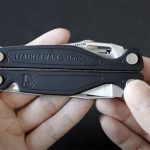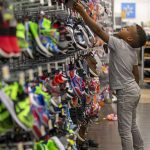Nike and Lululemon are still losing momentum with the Gen Z consumer while Ugg and On are seen as major gainers in mindshare for the generation. These observations and more are revealed in the the latest Piper Sandler Taking Stock With Teens survey for spring 2025.
Teen “self-reported” spending was up 6 percent year-over-year (Y/Y) to $2,388 in spring 2025 and up 1 percent vs. the fall 2024 report.
The survey is a semi-annual research project that gathers input from 6,455 teens with an average age of 16.2 years. Discretionary spending patterns, fashion trends, technology, brand and media preferences are assessed through surveying a geographically diverse subset of high schools across the U.S. Since the project began in 2001, Piper Sandler has surveyed more than 274,273 teens and collected approximately 65 million data points on teen spending.
Footwear Mindshare
On the footwear front, Nike remains the No. 1 brand in all footwear for the spring 2025 report, but the brand continues to see mindshare erosion (49 percent share this spring vs. 60 percent on average in 2022-2023), driven especially by females, where share dipped to under 40 percent – the first time since 2020. Male share also declined but is more stable at 57 percent.
What brands are gaining in footwear? Piper Sandler said Ugg has moved up the most (two spots with 4-points in share gains Y/Y), followed by On Running (two spots with 1-point in share gains Y/Y).
Ugg has become the No. 1 fashion trend among upper income females, dethroning leggings/Lululemon, which held the top spot since spring 2018.
Apparel Mindshare
Lululemon was ranked No. 3 in apparel mindshare for the second survey in a row, after falling from its No. 1 spot in the fall 2024 survey. The brand as the No. 1 apparel brand for upper income females from fall 2021 to spring 2024. Lululemon lost 4 points of mindshare Y/Y.
Hollister was ranked No. 1 in spring 2025, followed by and Brandy Melville at No. 2.
Accessories Mindshare
Stanley Cups placed as the No. 2 ‘fashion trend on its way out’ among upper-income females for the second consecutive Teen Survey.
Other Key Indicators
- The core beauty wallet reached the highest level ever this survey at $374 (+10 percent Y/Y). All categories except for haircare (flat Y/Y) grew Y/Y. Fragrance grew the fastest at +22 percent Y/Y.
- e.l.f. maintained its position as the No. 1 cosmetics brand, dropping 3 points of share Y/Y but ~flat sequentially at 35 percent of female teens.
- Ulta remained the No. 2 favorite beauty shopping destination and Sephora remained No. 1. Bath & Body Works appeared at No. 3, ranking in the top 10 for the first time since fall 2018.
- Lays (PEP) now most preferred snack for the first time since spring 2021, followed by Goldfish (CPB), then Doritos (PEP).
- Red Bull is now the top energy drink brand, but Celsius and Alani Nu together (29 percent) are ahead of both Red Bull (28 percent) and Monster (26 percent). Teens prefer energy drinks (45 percent) over coffee (28 percent) and soda (26 percent).
- Dr Pepper (10 percent) is teens’ favorite beverage brand, followed by Coca-Cola (9 percent), then Gatorade (7 percent). Soda is teens’ preferred type of beverage, followed by water, then energy drinks.
- Eighty-eight percent of teens own an iPhone, with 25 percent of teens expected to upgrade to an iPhone 17 this fall/winter (up from 22 percent in fall 2024).
- Among gig economy names, the most dominant providers are Uber in ridesharing (76 percent) and DoorDash in food delivery (73 percent).
- Instagram remains the most used social media app, with 87 percent of teens using monthly. TikTok was flat at 79 percent, while Snapchat improved to 72 percent.
- Roblox active usage slowed to 42 percent from 46 percent in fall 2024. 17 percent of teens have never played Roblox, in-line with fall 2024.
One interesting note was the percentage of parents who shopped exclusively at Walmart increased from fall 2024 across all income cohorts, while the percent of parents who shop exclusively at Target decreased across all income cohorts. Amazon remains the number one shopping website for upper income teens.
Of the households that have groceries delivered, Walmart maintained status as the No. 1 most popular provider (19 percent of households vs. 18 percent in fall 2024). Within upper income, Walmart was again the No. 3 most popular grocery delivery service.
Image courtesy Ugg
















